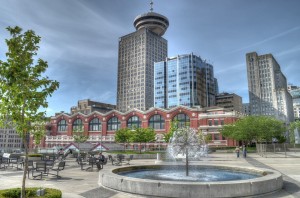~Joel Hayes, MPPA
Understanding City Planning
City planning, also known as urban planning, works to shape the design and functions of the environment and the social and economic activity that take place in a given area. According to the American Planning Association, the goal of planning is to “maximize the health, safety, and economic well-being of all people living in our communities” (APA, 2021). Planners at the city or county level will typically work cohesively with other departments, such as building, engineering and public works on projects and development. A planning development project typically goes through a process that can include a review of parking, landscaping, and architectural features to ensure appropriate design and land use zoning. Thereafter, building permits are often granted to allow construction to begin.
Planners use tools, such as zoning maps, to determine where, when, and what should be developed. These decisions are mostly based on comprehensive or general plans that are created through a long process, typically including public input, and are voted on by a city council or county board of supervisors. This process is often a guiding factor in determining the zoning and development that takes place in certain areas. City planners share some administrative authority. However, they rely on approved ordinances and guidelines set forth by a city council or board of supervisors who hold the greater decisional power when it comes to approving specific decisions, such as special use permits or zoning changes. These decisions may receive public commentary and are held in public view, to allow for feedback by citizens and stakeholders, and to help guide the city council or planning and zoning commissions in their decision making. Planning is often a social job, and if you ever want to buy an undeveloped parcel of land to build a home or to make modifications to a structure, you will often speak to a planner in that jurisdiction. There are multiple types of planning, including transportation, development, and neighborhood planning, to name a few.
Getting Into Planning
My entrance into planning came at a later point in my career, after beginning my career working in the nonprofit and administrative world as a program associate and an assistant to a CEO. In the beginning of my journey to my planning career, I was worried that my previous experiences would not translate or help me with employment in planning. Those initial inclinations were false, as some of the skills and projects I managed from grant writing to achieving USDA organic certification and becoming familiar with environmental policies and agriculture have helped me in my journey. I encourage those who may not have majored in planning or architecture to not feel like you don’t have a chance to get into a planning career. One thing I learned very early on as an intern at the County of Ventura’s planning division was how many people did not have planning backgrounds– many transitioned from other careers in the nonprofit or public administrative realms. Following my internship, I was able to land a job as a development review planner for the City of Rowlett, Texas where I work on reviewing development applications that include special use permits, rezonings, sign permits, and more. I also work on long-range planning documents, which includes updates to ordinances and historic preservation. I frequently present to the planning and zoning commission on projects, and I work daily with citizens to assist with planning-related inquiries.
Helpful Courses and Resources
For anyone interested in a planning career, in California specifically, I’d encourage you to review and become acquainted with the California Environmental Quality Act.
Two great government job posting sites that include planning jobs and internships are GovernmentJobs and CalOpps.
The American Planning Association has a job posting board for planning jobs and internships. Local chapters are a great tool to connect with planners and attend social networking events.
The U.S. Department of Housing and Urban Development on a federal level assists in providing expanded funding, research, and grants for housing, environmental projects and more.
Recommendations
It may be helpful to get connected with planners on LinkedIn to learn how they began their careers and seek their advice. I was able to form great connections through LinkedIn and had planners review my resume and make suggestions based on their experience. Local cities and counties often have internships that may not be posted; sometimes, if you inquire about interning, you may be granted an internship and gain experience. The County of Ventura has a paid internship program and spans over many county departments. Reviewing a city or county’s planning division website can be beneficial in learning about local codes, general plans, and may assist you later on by showing an employer your passion and dedication. Furthermore, if you are interested in planning, and if you have any questions, feel free to connect with me on LinkedIn.
Wishing everyone the best in their public administration careers.

